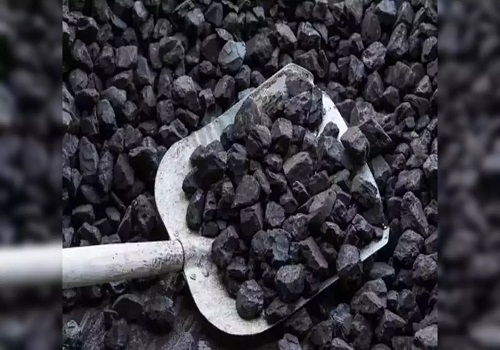Guardians of the Wild : How We Can Protect Endangered Species for Future Generations

The world’s biodiversity is rapidly diminishing, with numerous species facing the threat of extinction. From the iconic Bengal tiger to the humble sea turtle, endangered species are struggling against the growing pressures of human activity. Habitat destruction, poaching, climate change, and pollution are just some of the challenges these species face. However, all hope is not lost. Through collective efforts, we can protect endangered species and ensure their survival for future generations. In this article, we’ll explore effective strategies and ways in which we can all play a role in saving the world’s endangered wildlife.
Understanding the Importance of Protecting Endangered Species
Endangered species are those whose population numbers are so low that they are at risk of disappearing forever. These species are often keystone species in their ecosystems, playing a critical role in maintaining balance within their environment. The loss of an endangered species can have a cascading effect, disrupting ecosystems and impacting other wildlife. Protecting endangered species is not only an act of compassion, but a vital step in preserving the intricate web of life on Earth.
Key Threats to Endangered Species
1. Habitat Loss: As urbanization expands and forests are cleared for agriculture and infrastructure, many species lose their natural habitats. Deforestation, draining of wetlands, and the destruction of coral reefs are all major contributors to habitat loss.
2. Poaching and Illegal Wildlife Trade: Despite global efforts to regulate the trade in wildlife, illegal poaching continues to thrive. Elephants, rhinos, and tigers, among others, are often targeted for their body parts, such as tusks and pelts, driving them toward extinction.
3. Climate Change: The changing climate has altered habitats, making them inhospitable for many species. Melting ice caps, rising sea levels, and shifting weather patterns are significantly affecting species such as polar bears, sea turtles, and coral reefs.
4. Pollution: Oceans, rivers, and land are increasingly polluted with plastic waste, chemicals, and toxins that pose a serious threat to wildlife. Marine species, in particular, suffer greatly from ocean pollution, with countless animals ingesting or getting entangled in plastic debris.
How We Can Protect Endangered Species
1. Supporting Conservation Efforts:
Many organizations around the world are dedicated to protecting endangered species and their habitats. By supporting these organizations through donations, volunteering, or raising awareness, we can contribute to the preservation of wildlife. Institutions like the World Wildlife Fund (WWF), the International Union for Conservation of Nature (IUCN), and the Wildlife Conservation Society (WCS) are at the forefront of global conservation efforts.
2. Sustainable Practices:
Reducing our carbon footprint and adopting sustainable practices can help mitigate some of the threats posed by climate change. Using renewable energy, reducing waste, and supporting sustainable agriculture and fisheries are all important steps in creating a more eco-friendly world that protects wildlife.
3. Wildlife Protection Laws:
Stronger legislation and enforcement are essential in preventing illegal hunting and trade. Laws like the Convention on International Trade in Endangered Species (CITES) are crucial in controlling the trafficking of endangered species. However, we must continue to push for stricter enforcement and penalties to deter poaching.
4. Creating and Expanding Protected Areas:
National parks, wildlife reserves, and marine protected areas provide sanctuaries for endangered species. Expanding these protected zones, ensuring they are well-managed, and reducing human interference within them can provide a safe haven for wildlife to thrive. By supporting initiatives to establish and maintain protected areas, we can provide endangered species with the space they need to recover.
5. Sustainable Tourism:
Ecotourism and wildlife tourism, when done responsibly, can provide financial support for conservation efforts. The revenue generated from entrance fees to national parks and reserves can help fund research, protection programs, and the local communities that depend on the natural resources. However, it’s important to ensure that tourism does not disturb or harm the species it aims to protect.
6. Raising Awareness:
Public awareness is one of the most powerful tools in protecting endangered species. By spreading information about the threats faced by wildlife and the importance of conservation, we can inspire action and mobilize communities. Social media, documentaries, and educational campaigns all play a significant role in raising awareness about endangered species.
7. Adopting Sustainable Consumption:
Many consumer goods, such as timber, palm oil, and fish, are produced in ways that contribute to deforestation, habitat destruction, and overfishing. By choosing products with certification labels like Fair Trade, Rainforest Alliance, or MSC (Marine Stewardship Council), we can ensure that our consumption habits are not contributing to the destruction of habitats for endangered species.
Examples of Successful Conservation Stories
1. The Recovery of the Gray Wolf:
After being hunted to near extinction in the United States, gray wolves have been successfully reintroduced into Yellowstone National Park. Their recovery has led to healthier ecosystems, proving that with proper protection, even the most endangered species can make a comeback.
2. The Protection of the Giant Panda:
Through years of dedicated conservation efforts, China has successfully increased the population of giant pandas. Habitat restoration, anti-poaching measures, and breeding programs have all contributed to their recovery. The giant panda is now classified as "vulnerable" rather than "endangered" thanks to these efforts.
3. The Revival of the Arabian Oryx:
Once extinct in the wild, the Arabian oryx has made a dramatic comeback through conservation programs that include captive breeding and reintroductions into the wild. Today, the Arabian oryx is once again roaming the deserts of the Middle East.
How You Can Get Involved
1. Adopt an Endangered Animal:
Many wildlife organizations offer symbolic adoption programs, where you can sponsor an endangered species. Your contributions help fund the conservation and protection of these animals.
2. Volunteer with Wildlife Organizations:
Many organizations rely on volunteers to help with research, animal monitoring, and habitat restoration. Volunteering can be a hands-on way to contribute to conservation efforts.
3.Reduce Your Plastic Use:
Reduce plastic consumption and properly dispose of waste to help keep oceans and land clean. Participate in clean-up drives and campaigns to remove trash from natural habitats.
4. Donate to Conservation Programs:
Many conservation organizations offer direct donations to support on-the-ground wildlife protection efforts. Even small contributions can make a difference.




















